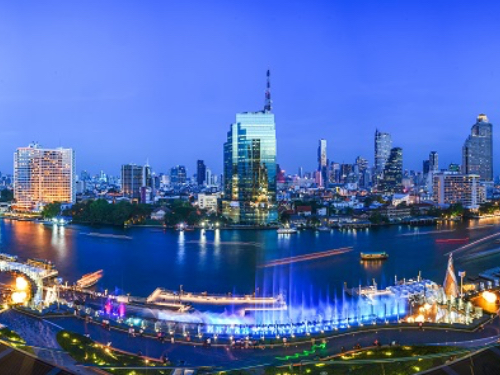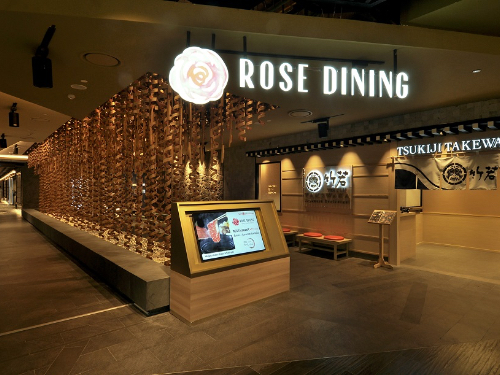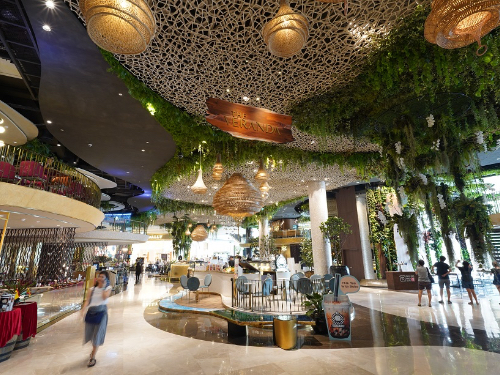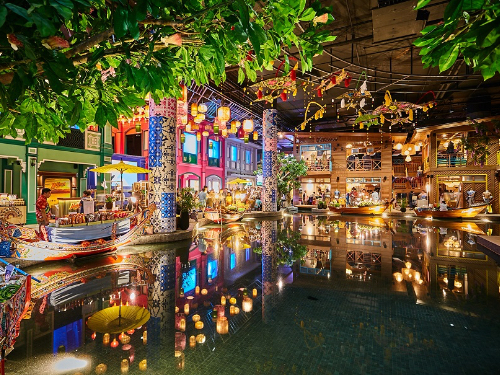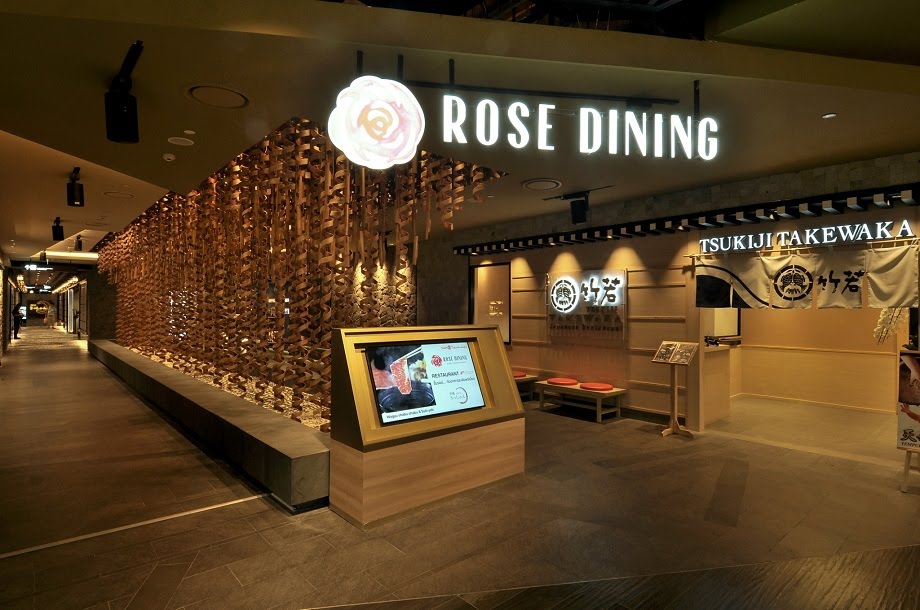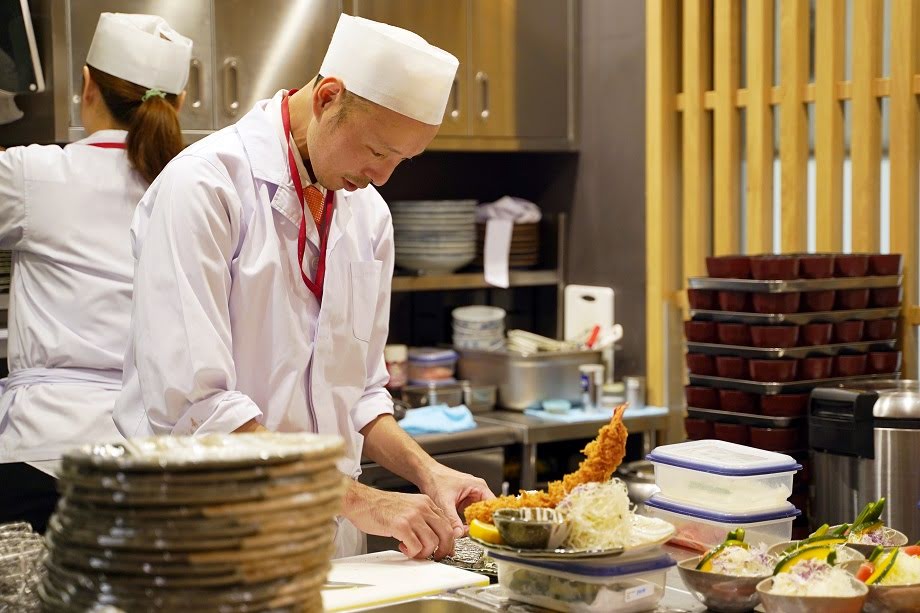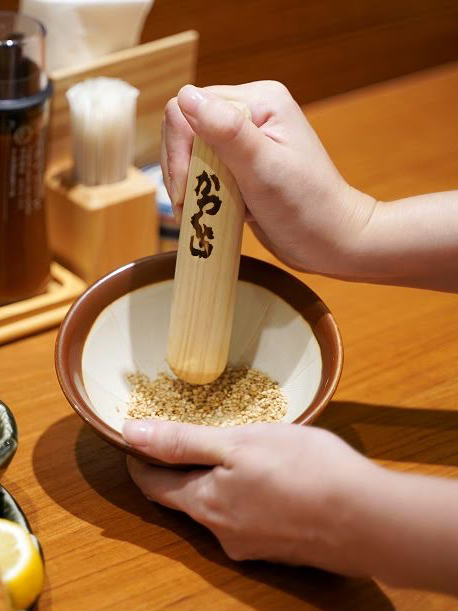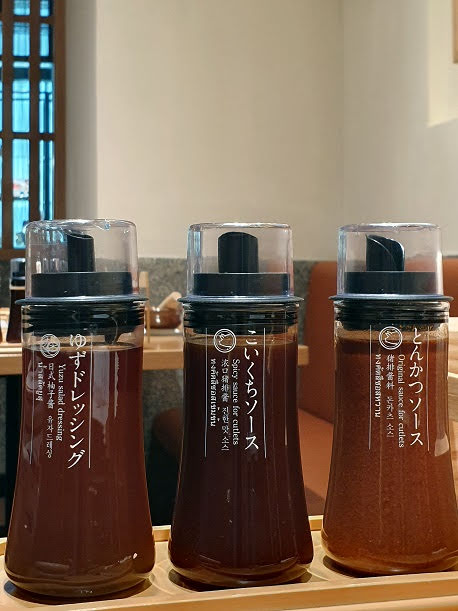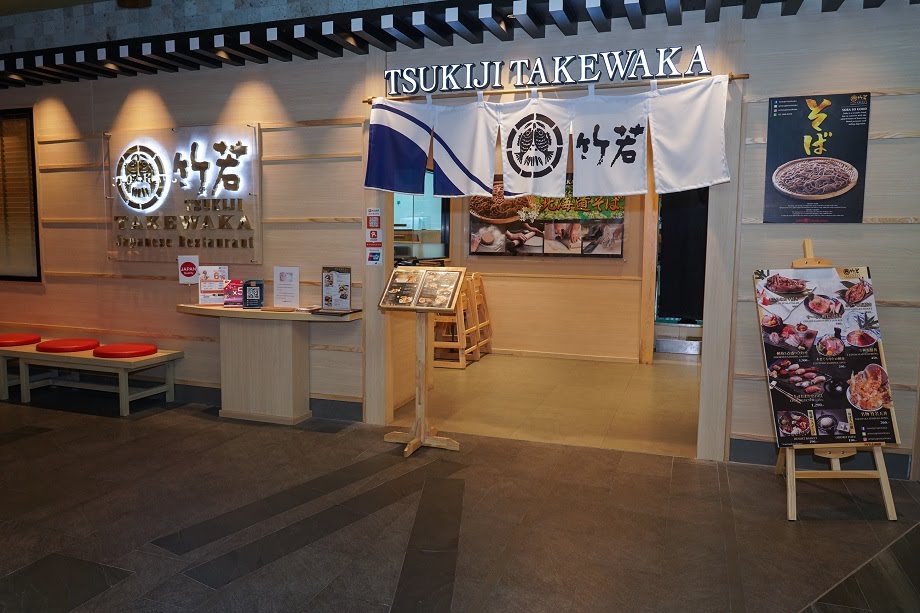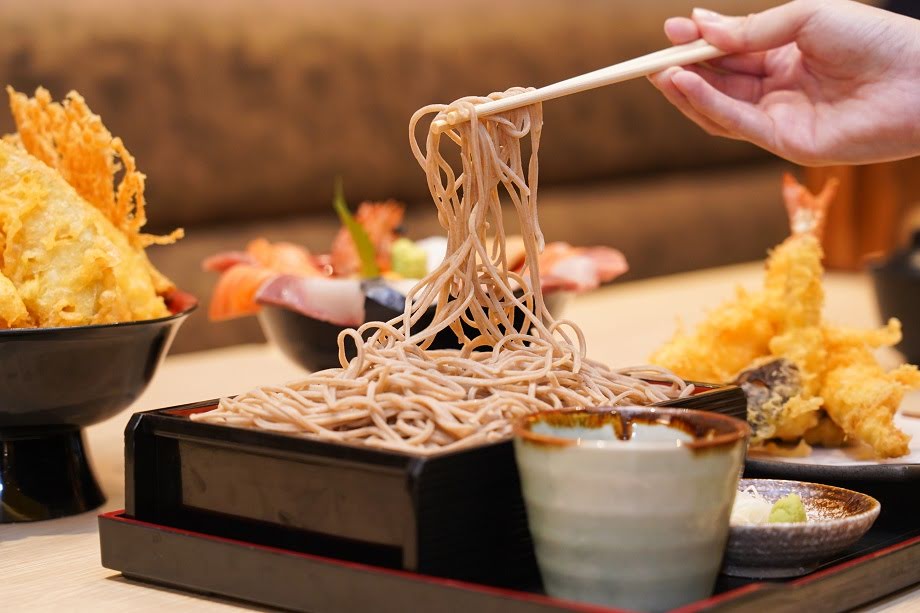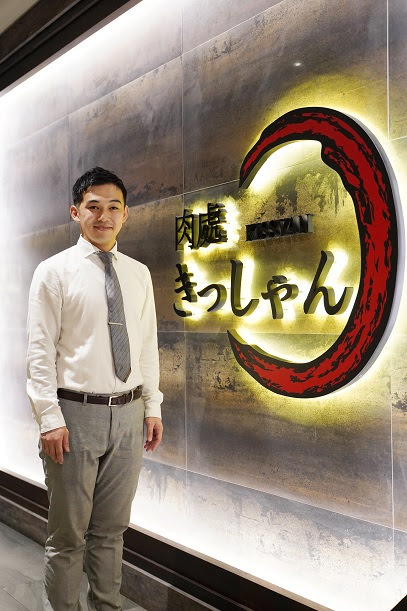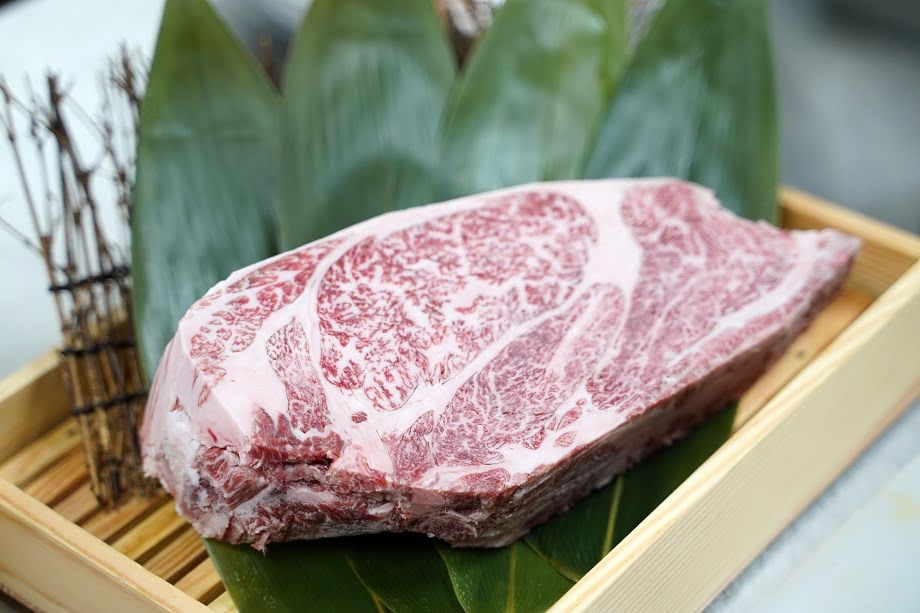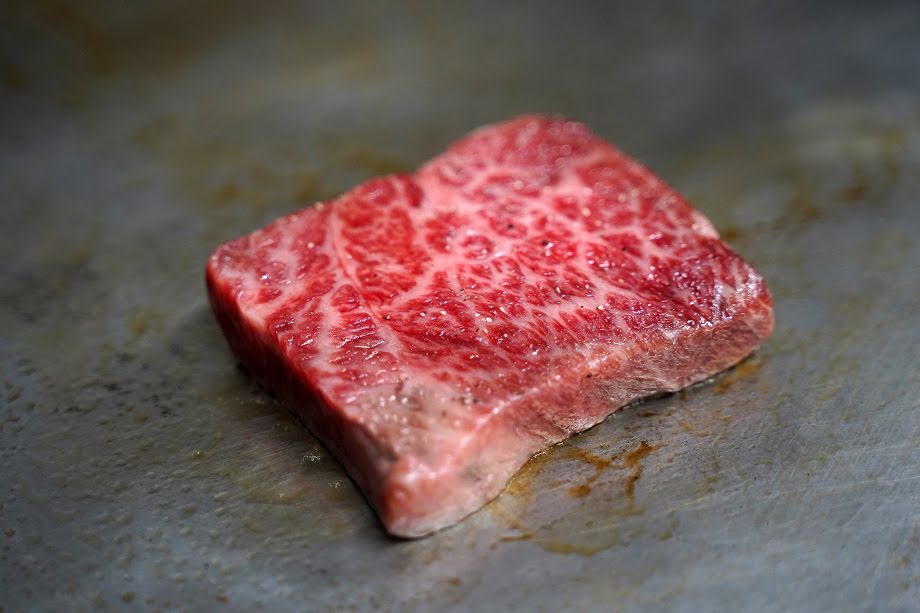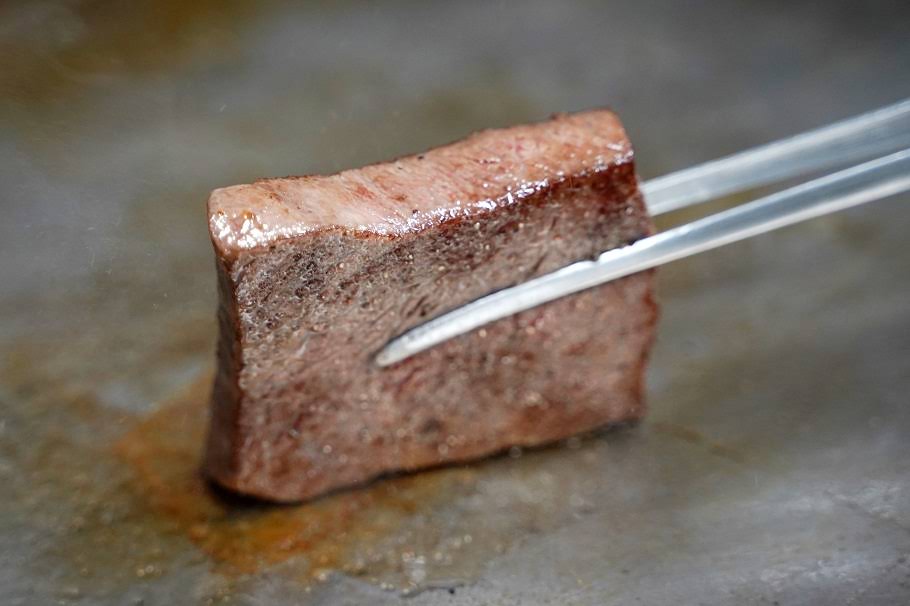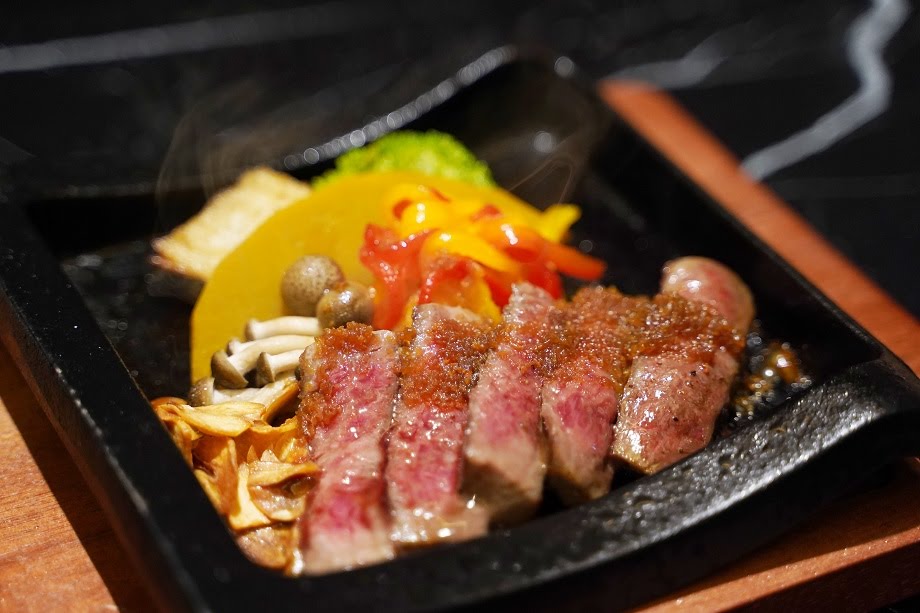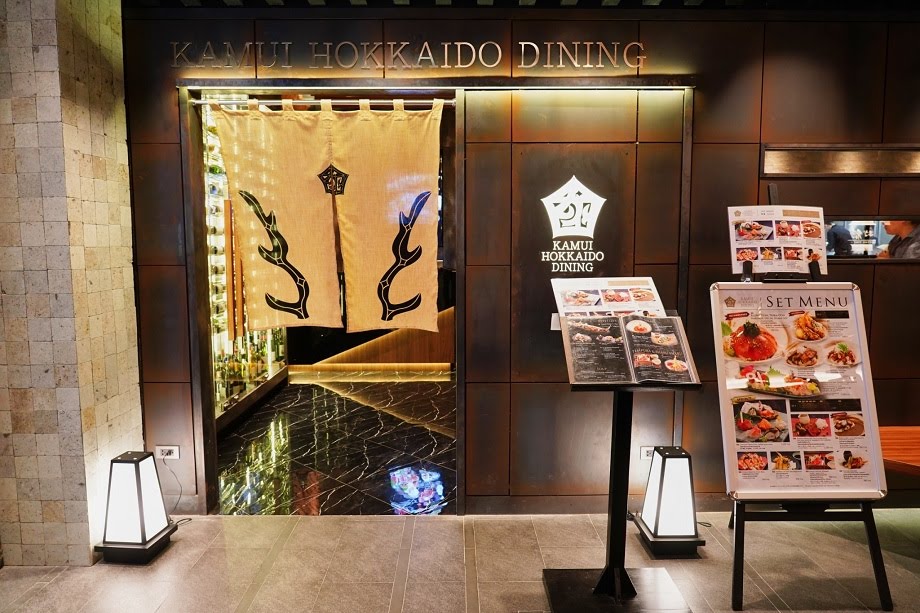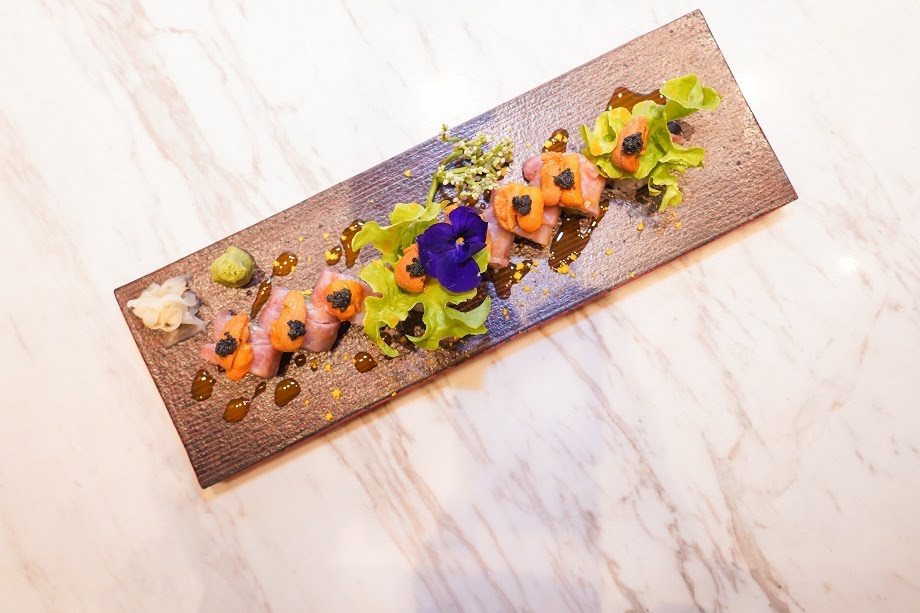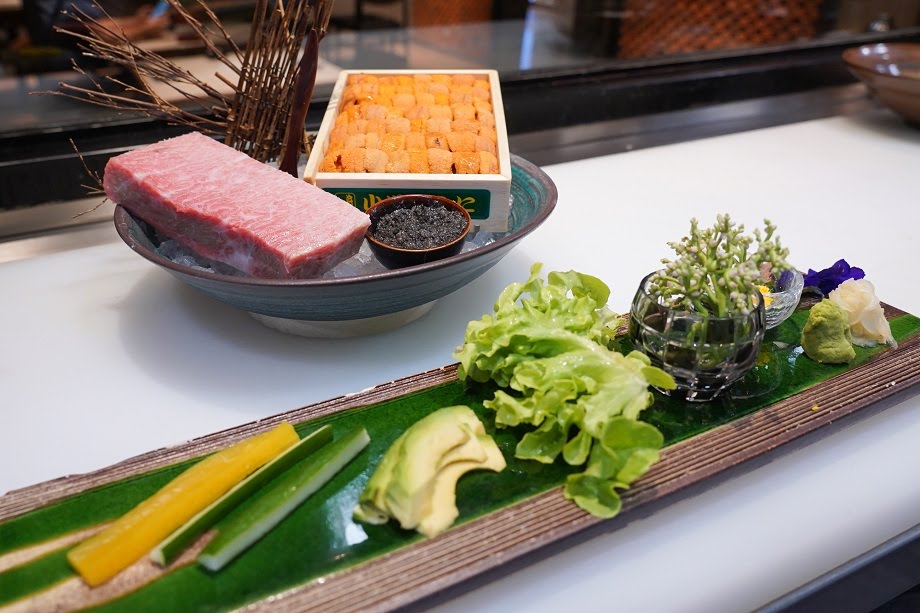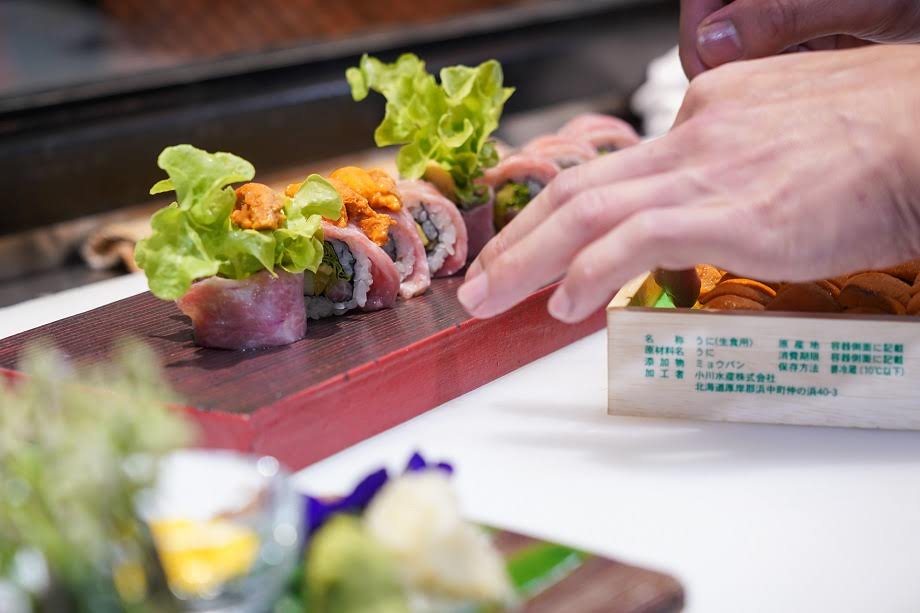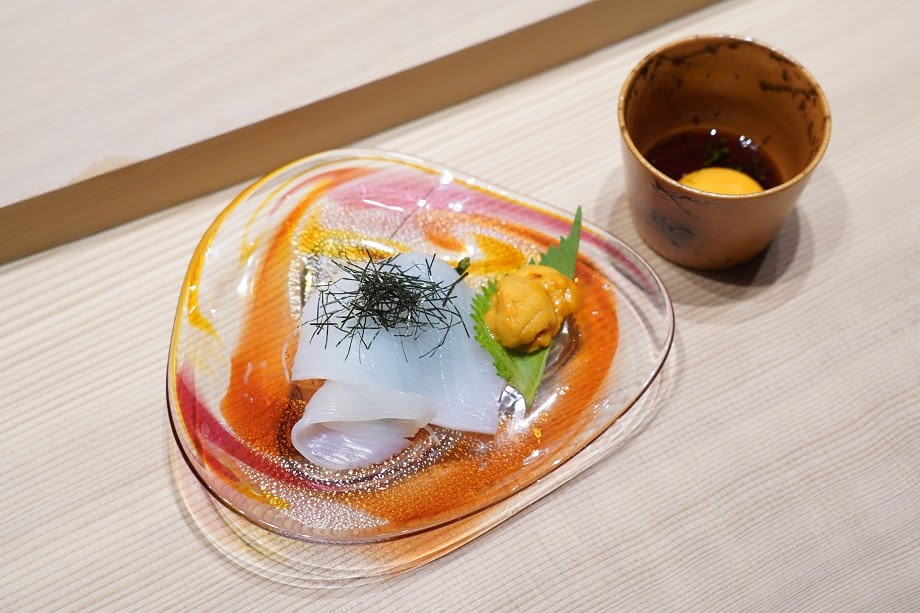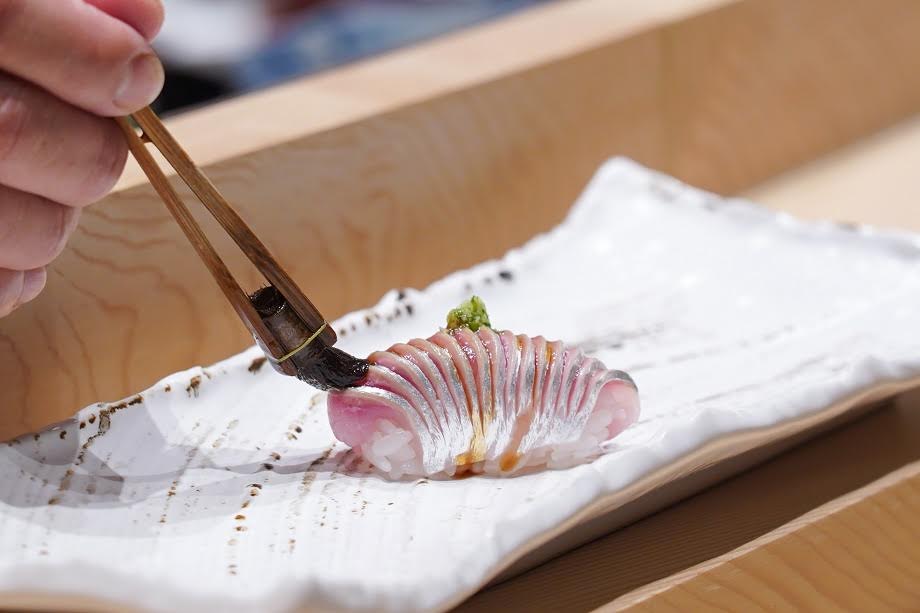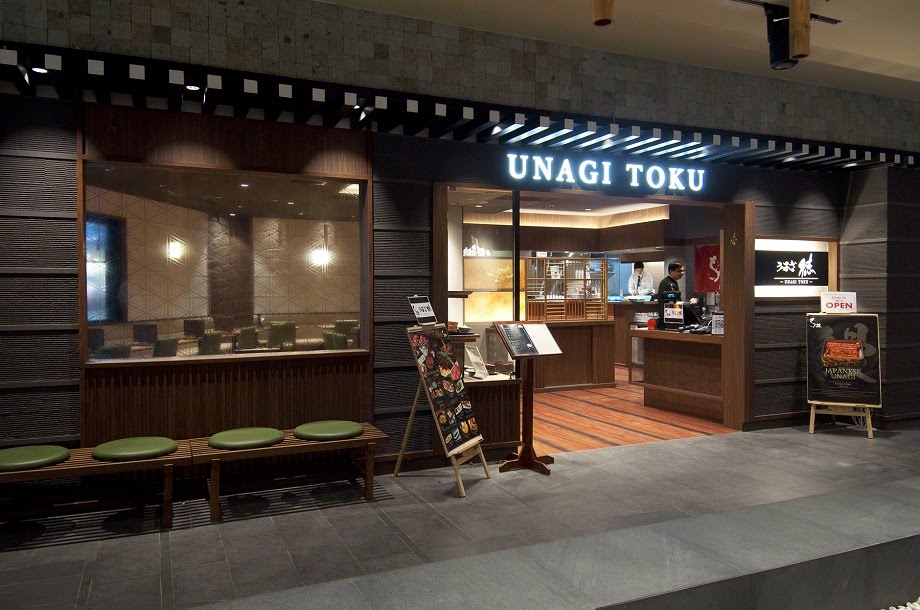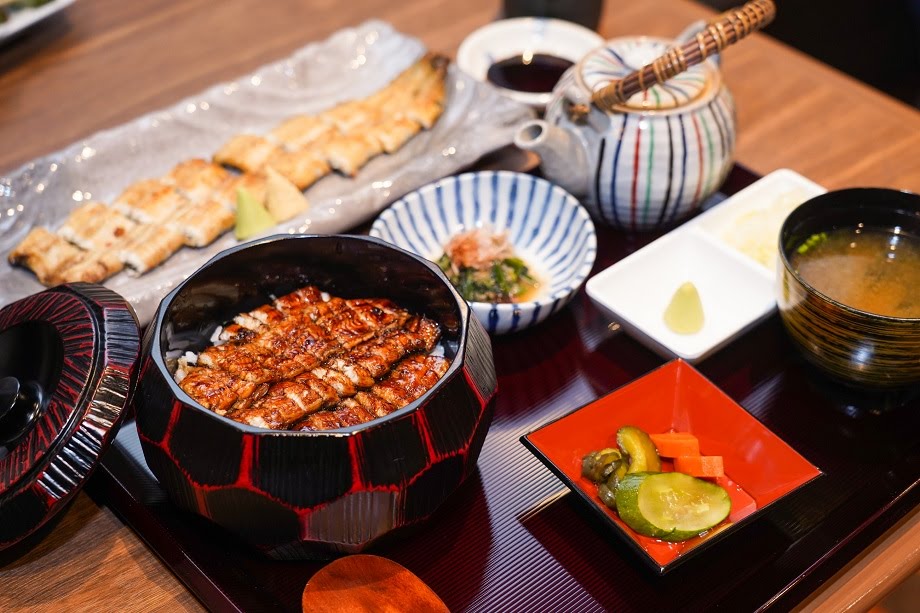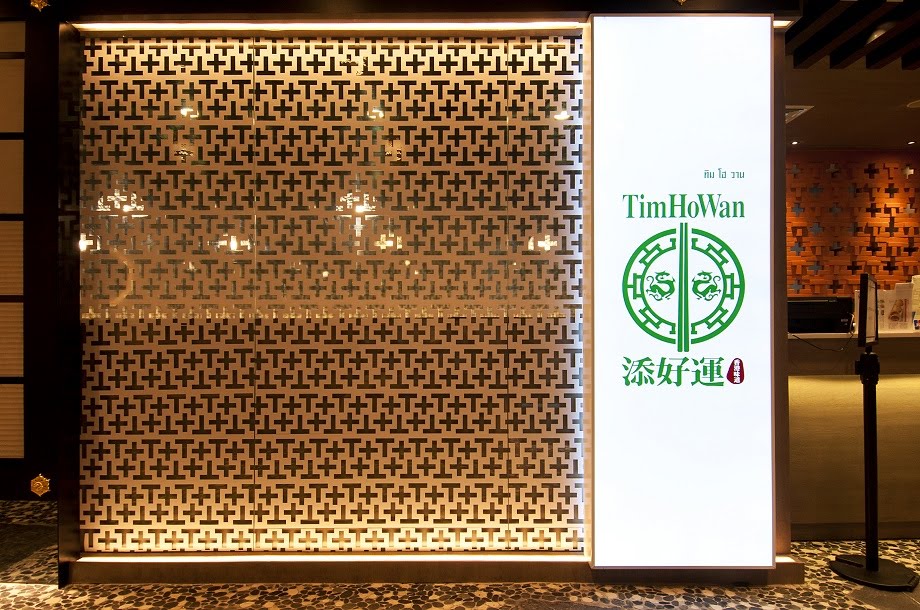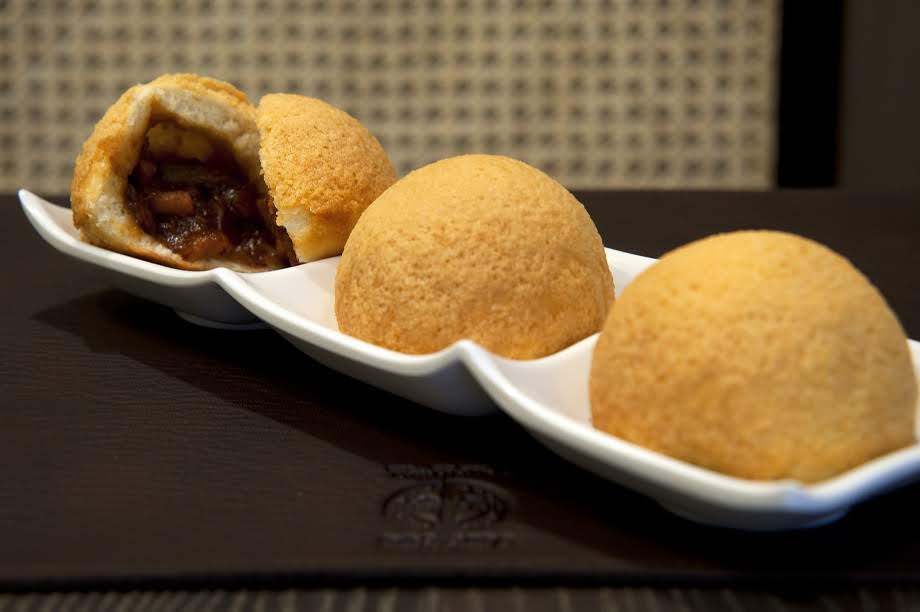Rose Dining
Many people may know that Japan’s high-end department store, Siam Takashimaya, has officially opened in Thailand, but they may not know about what’s truly awesome about Rose Dining, a zone that brings together 6 legendary Japanese restaurants and a Chinese restaurant with 1 Michelin star for foodies to enjoy in a warm, casual and private atmosphere.
Once you step into the Rose Dining zone, you’ll feel like you’re right in Japan, because the interiors follow a Zen influence, with pretty rock gardens. After browsing through the restaurants, foodies are sure to gape in admiration, because every restaurant is famed and known to have famously long lines in Japan. All of the 6 Japanese restaurants that have opened here at Siam Takashimaya are the first and only branches in Thailand. Don’t miss out on any of them! We’ve rounded up the best dishes from these restaurants in the Rose Dining zone which are sure to give you an unforgettable first impression.
Katsukura
This top tonkatsu restaurant has won the hearts of Tokyo urbanites and tourists for over 25 years. The close relationship between Takashimaya and Katsukura lead to the idea of opening the first branch in Thailand. It feels like the exact same store from Japan has landed here, as the atmosphere, decoration and utensils are exactly the same as those in Japan. The taste of the food also remains original, down to the sauces, ingredients and most importantly, to the oil that is used to fry the tonkatsu to maintain its crispy, aromatic and delicious taste like in Japan.
Another important component of tonkatsu, which is said to make or break this dish, is the restaurant’s sauce which has the ingredient of red wine. This makes the taste sweet and sour, and goes well with grinded sesame seeds. Their salad dressing is just as good because it uses yuzu oranges and does not mix in any oil.
The miso soup at Katsukura is not typical either, because the soup uses 2 types of miso: the red miso and white miso. This creates a pleasant taste you won’t find elsewhere. Even their pickled vegetables follows the same with their restaurant in Kyoto, which uses only hiroshima pickled vegetables. The complete set here will give you a tonkatsu experience like you’ve never had before.
Tsukiji Takewaka
The next restaurant is Tsukiji Takewaka, which opened its first branch at the Tsukiji Fish Market in 1988 with the mission to serve fresh and quality food with many menus to choose from. Every menu must be made fresh and the Tsukiji Takewaka at Siam Takashimaya is the first branch in the world that is outside of Japan. The quality is maintained like the original and this sees an chef from Hokkaido who kneads the dough to make fresh soba noodles every day.
Another important component of tonkatsu, which is said to make or break this dish, is the restaurant’s sauce which has the ingredient of red wine. This makes the taste sweet and sour, and goes well with grinded sesame seeds. Their salad dressing is just as good because it uses yuzu oranges and does not mix in any oil.
The miso soup at Katsukura is not typical either, because the soup uses 2 types of miso: the red miso and white miso. This creates a pleasant taste you won’t find elsewhere. Even their pickled vegetables follows the same with their restaurant in Kyoto, which uses only hiroshima pickled vegetables. The complete set here will give you a tonkatsu experience like you’ve never had before.
Kissyan
Walk past Kissyan and it’s impossible to miss their wonderful smell of fish soup that beckons you. “That’s because we meticulously season our soup with katsuo fish and kombu seaweed with a secret recipe by Kissyan that is free from any MSG,” the restaurant manager, who sometimes moonlights as a chef for some menus, proudly proclaims.
Kissyan first opened in 1994 and was a shabu restaurant that was very popular in Japan. There are 6 branches in Osaka and the one at Siam Takashimaya is the first outside Japan. Previously, the owner was a beef butcher and with his knowledge and love for beef, he wanted his customers to be able to enjoy premium beef at a reasonable price. Thus became the beginnings of this quality shabu restaurant.
Kissyan serves only A5 beef so if you’re a beef lover, don’t miss their cuts here. Their marbled kobe beef will send your heart soaring. Once seasoned with fantastic soups to make the beef bouncy, the sweetness and juiciness of the beef is something you won’t be able to forget.
Another menu just as impressive as the shabu is the Kobe Beef Wagyu Steak, which uses soft A5 kobe beef that is lightly sprinkled with salt and pepper. There’s no need to season it much because the secret sauce it is served with easily enhances the taste of the premium wagyu. The luscious and melt-in-your-mouth taste of the beef goes hand in hand with the pickled garlic, potatoes, pumpkin, mushroom and peppers that are served on the side, making for a perfect combination to round off your meal.
Kamui Hokkaido Dining
This Japanese restaurant will dispel any notions you may have that looks can be deceiving because KAMUI Hokkaido Dining’s food is as delicious as it looks. This Japanese restaurant follows a fine dining concept that focuses on beautiful plating and using authentic Japanese ingredients. Their good taste can be guaranteed in over 20 branches in Japan, as well as another 20 overseas. The branch in Siam Takashimaya is the first and only in Thailand and has an even more premium concept that is more special than other places in order to complement ICONSIAM.
In order to offer intimate and exclusive service to all customers, the restaurant is spacious and has only 40 seats. The open kitchen also allows diners to see chefs at work to create special dishes. The man behind these creations is Executive Chef Yamamoto Masamitsu, who has honed his experience at a kaiseki restaurant for over 14 years, as well as cooking in India, Switzerland, Hong Kong and Canada. This has contributed to his dexterity in choosing and adapting local produce to his dishes.
A menu chef Yamamoto wants everyone to try is Oh-Toro!! Uni!! Truffle!! Special Roll – Egg Yolk Mustard Ponzu. Just that list of ingredients is enough to wow, as they are all considered the finest of ingredients that don’t usually come together. This special sushi roll wraps otoro around rice and is topped with uni and black truffle. It is drizzled with egg yolk mustard ponzu and showcases the skill of the chef who mixes everything together without letting one overpower the other. What’s special here is they also hold monthly workshops where you can learn to cook with chef Yamamoto. If you’re interested in learning their secrets of deliciousness, follow the Facebook page of Kamui Hokkaido Dining.
Otaru Masazushi
The charm of eating omakase sushi is to enjoy food that was made by the heart and to listen to the stories and experiences of the chefs. You’ll be instantly impressed upon seeing chef and 3rd generation owner, Takayuki Nakamura, using a long sushi knife to slice Aori squid imported from Japan into long strips like somen while telling stories.
A menu that the chef dares all to try is their famous signature, Ika somen. Fresh squid is served with uni and a sauce bowl with egg yolk. To eat it, put the uni into the sauce bowl, mix together and then dip the squid into the sauce. The sauce is a rich palate of saltiness and smooth sweetness that goes well with the squid. The chef says this serving style is called Otaru, which sees a mixture of uni. A longstanding tradition that has been around for many years, this Otaru culture is what he wants the world to experience.
This restaurant has been opened for 81 years, since his grandfather’s generation where it was situated by Otaru river. The cooking gene runs in the family and the chef has learned to slice fish and make sushi since he was 9 years old. Nakamura is acclaimed globally and has been named the 4th best sushi chef in the world and the no. 1 sushi chef in Hokkaido. There is no wonder why this restaurant is highly popular in Japan and requires advanced reservations.
The next menu is the Nishin sushi, or herring fish sushi, which can only be caught in Hokkaido. This fish must be imported from Japan. The chef slices cuts into the fish and dabs shoyu sauce all over the piece to bring out the sweetness and freshness of the fish. The heart of every sushi is rice and the chef has installed a ph meter to maintain the water quality to be the same as in Japan in order to keep all tastes of Otaru.
The chef reveals the reason behind the restaurant using only the finest ingredients. “We had our own boat, so we could find our own ingredients we desired,” such as everyone’s favorite uni which is in the special menu Kasui Ezo Bafun Uni. This uni is submerged in sea water and without it can only live for 3 days, so rest assured about the freshness of this menu. This menu is served as a rice topped with uni that does not require much seasoning. Just a bit of sea salt easily enhances it magnificently.
Besides the Full Course Omakase served here, there is also a Mini Omakase where diners can order a la carte after they are done with their courses. They can also come in for the ambiance and order a la carte while ordering cool drinks and having a chit chat with the chef too, which he welcomes.
The restaurant at Siam Takashimaya is the first time in history of expanding beyond Japan and head chef Nakamura is posted here so it’s a great opportunity for Thais to taste omakase by the 4th best sushi chef in the world.
Unagi Toku
Unagi rice is a menu that many people know and love, but what’s also common is that the eel imported is usually frozen from Japan. Rarely is there the opportunity to enjoy eel that is fresh and recently still swimming around. It’s hard to find any place that does so unless one were to fly to Japan. That’s why Unagi Toku, a legendary unagi rice restaurant that has been open for over 110 years, has opened its doors in Thailand. This is a famed restaurant from Hamamatsu, Shitsuoka that has never opened a branch outside of Japan before and has landed in Siam Takashimaya first before anywhere in the world.
Every month will see a chef coming in from Japan. They’ll be slicing fresh eel for you to see the softness and delectable texture of the eel which leaves no salty smell. The outstanding menu is none other than Hitsumabushi (Matsu) where the chef will slice the eel into small pieces to be topped on soft Japanese rice for an easy to consume Nagoya style. There are 3 styles, first being the eel grilled with a sweet sauce, which is not too piercingly sweet. The second style sees rice in another bowl that is topped with negi and spring onions for a different taste. The last is ochazuke and this set includes a tea pot. Pour the tea into the unagi rice for a warm and aromatic broth that gives a new twist to this dish.
Tim Ho Wan
Let’s get to the one and only Chinese restaurant in the Rose Dining zone. Tim Ho Wan is a Hong Kong-style Chinese restaurant that Thais have all heard of. Its original branch has received 1 Michelin star and their new and 4th branch in Thailand sees a new concept that injects opulence and chefs from Hong Kong who will be creating special menus for this branch only.
A menu not to be missed at Tim Ho Wan is the barbeque pork bun that is sweet on the inside and crispy from the dough on the outside. The dough and soft pork go together so well that it’s no wonder why they have earned a Michelin star. There is also shrimp dumplings with chilli sauce that every table orders, thanks to the fiery taste Thais love, as well as many other menus available only at the Siam Takashimaya branch.
These are the stupendous dishes from each restaurant that are awaiting you to go taste at the Rose Dining zone, 4th floor Siam Takashimaya. It’s guaranteed that you’ll fall in love with the special exclusivity of this zone that you’ll want to go back again and again.


